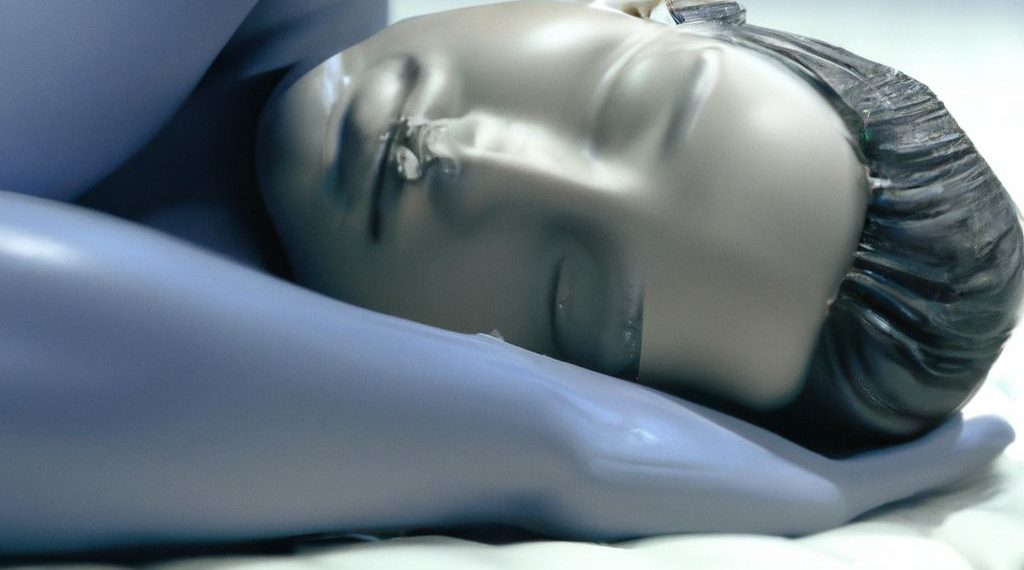Key Takeaways:
- Memory foam mattresses are composed of a polymer called polyurethane, which provides viscosity and elasticity, offering a unique level of comfort and support.
- These mattresses work by responding to pressure, distributing body weight evenly, and providing a recovery period and energy absorption for optimal comfort and sleep quality.
- There are different types of memory foam mattresses, including traditional, open-cell, and gel memory foam, each with their own characteristics and benefits.
- The structure of memory foam mattresses typically consists of a comfort layer, a transition layer, and a core, allowing for different levels of support and comfort.
- Some of the benefits of memory foam mattresses include pressure relief, spinal alignment, allergen resistance, motion transfer reduction, and noise reduction.
- However, there are also drawbacks to consider, such as heat retention, expense, lack of waterproofing, a potential “stuck” feeling, off-gassing odors, and the weight and difficulty in moving.
- When choosing a memory foam mattress, it is important to consider personal preferences and needs, as well as factors like suitability for hot sleepers, longevity, and support preference.
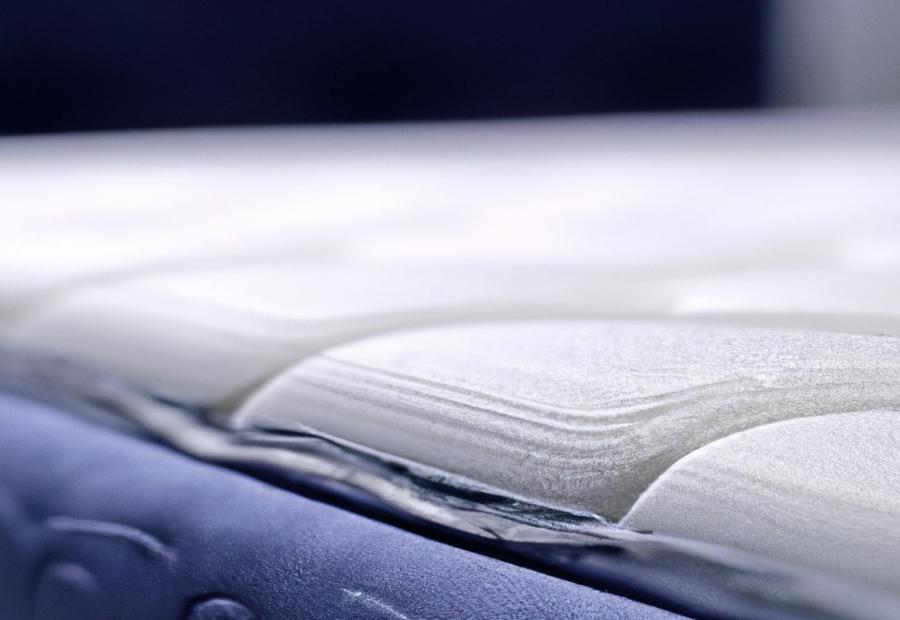
Photo Credits: Www.Mattressreviewguru.Com by Harold Johnson
Memory foam mattresses have revolutionized the way we sleep, providing unparalleled comfort and support. Discover the wonders of memory foam as we delve into its composition and properties. Uncover the fascinating history of memory foam mattresses and how they have evolved over time. Prepare to be amazed by the science and innovation behind this incredible bedding technology. Get ready to experience the best sleep of your life on a memory foam mattress.
What is memory foam?
Memory foam is a unique polymer called polyurethane. It’s known for its viscosity and elasticity, which let it adjust to a body’s shape when pressure’s applied. This response helps to evenly distribute body weight and give support where needed. Plus, memory foam has a slow recovery period and good energy absorption, making it perfect for mattresses.
Memory foam is sold in different types! Traditional memory foam is the most popular and has comfort and support. Open-cell memory foam is breathable and helps with air flow and heat dissipation. Gel memory foam has gel beads or infusions to keep temperatures regulated.
Mattresses with memory foam have 3 layers. The comfort layer provides cushioning and contouring. The transition layer helps distribute weight evenly and gives extra support. The core is the foundation, giving stability.
Memory foam mattresses offer plenty of benefits. They relieve pressure by contouring to the body and reducing stress on pressure points. Memory foam can also promote spinal alignment while sleeping. And, these mattresses are resistant to allergens like dust mites. They can also reduce motion transfer between sleepers and noise from movements.
What is the difference between memory foam and hybrid mattress
But, memory foam mattresses have some cons too. Traditional memory foam may cause sleepers to feel warm due to its structure. These mattresses are also costlier than others. Also, they don’t have waterproofing, so they can be damaged by liquid spills. Some people feel “stuck” with memory foam because of its contouring. Plus, off-gassing odors can be present. And, they’re heavy, so they’re hard to move.
When choosing a memory foam mattress, personal preferences and needs are key. Different people may prefer different types of mattresses. Hot sleepers should think about the heat retention of memory foam. Longevity should be taken into account, as memory foam mattresses don’t last as long. Plus, support preference should be considered, as some need firmer or softer support.
History of memory foam mattresses
Memory foam mattresses have a long history. NASA first developed them in the 1960s. They wanted to improve seat cushioning and crash protection for pilots and passengers. Memory foam is made from a unique polymer called polyurethane. It responds to pressure and body heat. Now, it is available to everyone and is popular for its ability to conform to a person’s shape.
The composition and characteristics of memory foam are essential for its functioning. Polyurethane gives it viscosity and elasticity. This lets it adjust to a person’s body and distribute weight evenly. This relieves pressure and supports their curves.
There are various types of memory foam mattresses. Traditional memory foam is great for pressure relief. Open-cell memory foam has better breathability and temperature regulation. Gel-infused memory foam has gel particles for cooling. Each type suits different needs.
A memory foam mattress typically has three layers: comfort, transition, and core. The comfort layer provides softness and contours. The transition layer acts as a buffer between the comfort and core layers. The core is usually made from polyfoam or springs for stability.
Memory foam mattresses have many benefits like pressure relief, spinal alignment, allergen resistance, motion transfer reduction, and noise reduction. But, they can cause heat retention and be expensive. They also aren’t waterproof and can give a “stuck” feeling. Plus, they may have a bad smell and weigh a lot.
The best memory foam mattress depends on a person’s needs. Hot sleepers might prefer open-cell or gel memory foam. It is important to research and test out different types before buying one.
Composition and characteristics of memory foam
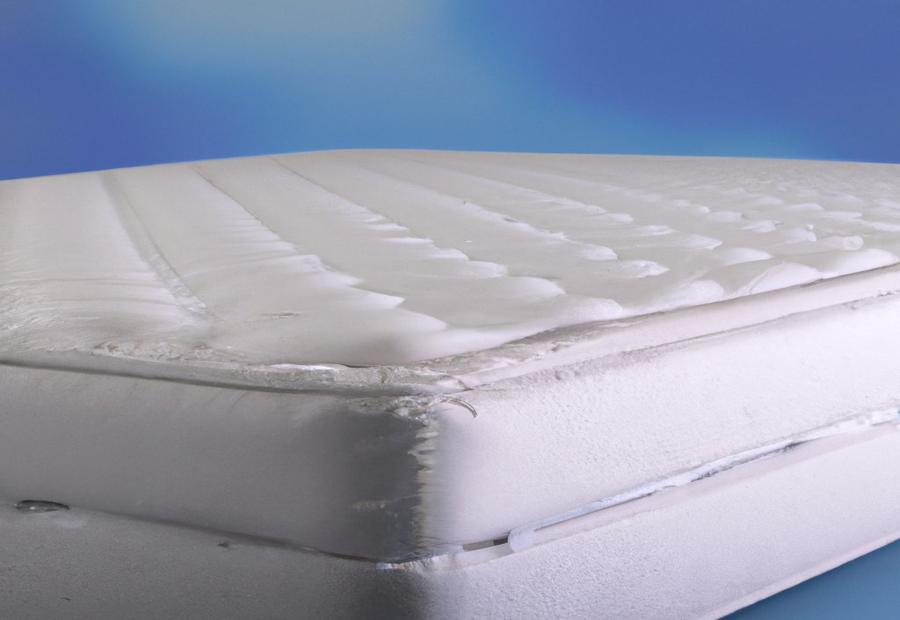
Photo Credits: Www.Mattressreviewguru.Com by Jacob Hill
Memory foam mattresses are gaining popularity for their unique composition and characteristics. Discover how a polymer called polyurethane contributes to the comfort and support provided by these mattresses. Also, learn about the importance of viscosity and elasticity in creating the perfect balance between cushioning and responsiveness. Get ready to dive into the fascinating world of memory foam mattresses and uncover the science behind their impressive features.
Polymer called polyurethane
Polyurethane is a polymer used in memory foam mattresses. It has the right amount of stickiness and elasticity to make it ideal for providing comfort and support. Its high density makes it responsive to pressure and heat. It also evenly distributes body weight across the mattress.
Innovations in memory foam have led to the development of open-cell and gel variations. These address heat retention issues by allowing greater airflow and incorporating cooling gels into the material.
Polyurethane has made memory foam mattresses sought-after for their superior comfort and support. People appreciate its ability to contour to their bodies and provide pressure relief. That’s why it’s become so popular for a restful night’s sleep.
Viscosity and elasticity
Memory foam is special due to its viscosity. It has the ability to fit the shape of the body. When pressure is applied, polymer molecules in memory foam rearrange. This results in an even weight distribution and less pressure points. This provides a peaceful sleep experience.
Moreover, memory foam has an elastic quality. It springs back to its original shape when the pressure is gone. This makes it suitable for different sleeping positions. It also helps in reducing motion transfer, as the mattress absorbs energy.
It also recovers from deformation over time. After being compressed or indented, memory foam gets back to its original shape. This ensures the mattress maintains its supportive features.
In conclusion, viscosity determines how the mattress contours, while elasticity enables quick recovery. Knowing these properties helps in choosing the best memory foam mattress for individual needs.
How memory foam mattresses work

Photo Credits: Www.Mattressreviewguru.Com by Steven Nguyen
Memory foam mattresses have gained immense popularity due to their unique properties. In this section, we will uncover the workings of memory foam mattresses, exploring their pressure-sensitive response, body weight distribution, recovery period, and energy absorption. Prepare to be amazed as we delve into the fascinating science behind these mattresses, revealing how they adapt to our bodies and provide unparalleled comfort for a restful night’s sleep.
Pressure-sensitive response
Memory foam mattresses possess a pressure-sensitive response that molds to a person’s body when they lie down. This helps to spread body weight evenly, eliminating pressure points and providing comfort.
The viscoelastic properties of memory foam enable it to respond to changes in pressure and temperature. As pressure is applied, the foam softens and contours to the body’s shape, giving tailored support.
Moreover, memory foam absorbs energy as it compresses, which reduces motion transfer between sleeping partners. This stops disturbances from movements during sleep.
Also, the foam’s responsiveness allows for a gradual recovery period after pressure is taken away. It returns to its original shape, continuing to supply support and keeping the spine in alignment.
In short, the pressure-sensitive response of memory foam mattresses enables personalized comfort, support, and relief from pressure points by fitting to an individual’s body shape and distributing weight evenly.
Body weight distribution
Memory foam mattresses have amazing pressure-sensitive response. They conform to the shape of your body, reducing pressure points and discomfort. Plus, they help evenly distribute your body weight and maintain proper spinal alignment, decreasing the risk of back pain.
The ability of memory foam to absorb energy and recover its original shape also contributes to effective body weight distribution. This prevents any lingering body impressions from forming over time.
Other noteworthy qualities of memory foam mattresses include: traditional memory foam, open-cell memory foam, and gel memory foam – each with its own set of unique features and advantages.
To maximize the benefits of body weight distribution on memory foam mattresses, choose one with an appropriate firmness level based on your weight and sleeping position. This will ensure you get adequate support and pressure relief.
Recovery period and energy absorption
Memory foam mattresses possess a distinctive quality known as ‘recovery period and energy absorption.’ This refers to the mattress’s ability to snap back to its initial shape after pressure is applied, as well as its aptitude to absorb and spread body movements evenly.
This phenomenon of recovery period and energy absorption can be understood through the composition and characteristics of memory foam. It’s made up of a polymer called polyurethane, which grants it its special properties. Memory foam’s viscosity allows it to conform tightly to the body shape, delivering excellent pressure relief. Plus, its elasticity permits it to quickly go back to its original form when the pressure is relieved.
Furthermore, memory foam mattresses possess different types that provide distinctive recovery periods and energy absorption abilities. Traditional memory foam has a sluggish recovery period but offers superior energy absorption, which makes it perfect for people who require extra support and ache relief. Open-cell memory foam has a quicker recovery period yet still provides good energy absorption. Lastly, gel memory foam combines the benefits of both traditional and open-cell foams by incorporating cooling gel particles for improved temperature regulation without compromising on recovery or energy absorption performance.
Types of memory foam
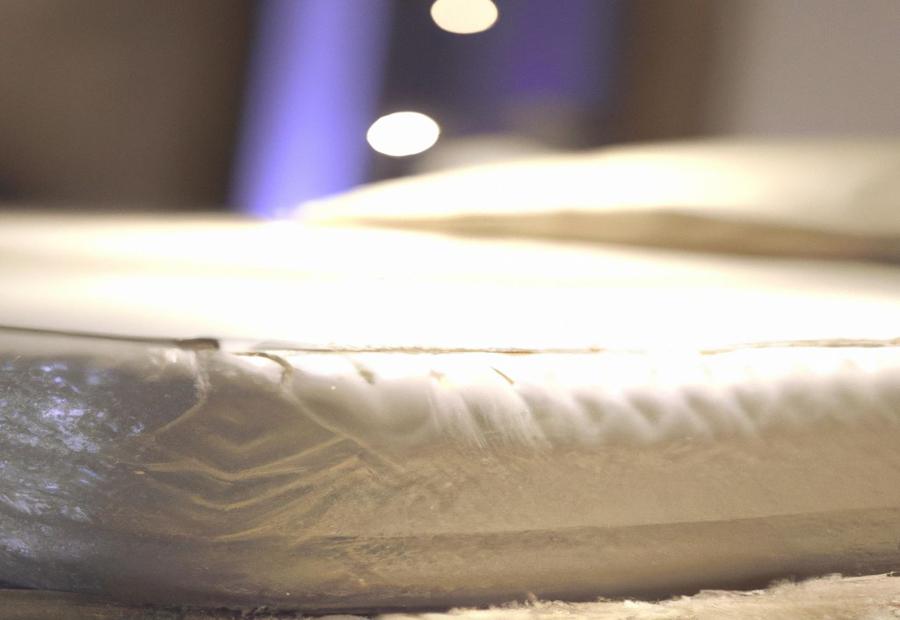
Photo Credits: Www.Mattressreviewguru.Com by Scott Mitchell
When it comes to memory foam mattresses, there are different types to consider. From traditional memory foam to open-cell and gel memory foam, each sub-section brings its own unique qualities and benefits. Let’s dive into the world of memory foam and explore the distinct characteristics of each type.
Traditional memory foam
Traditional memory foam has a special ability – it molds to the shape of your body while still giving support. This creates a comfortable sleeping experience that meets individual needs, without sacrificing spinal alignment.
John’s experience is a great example of this. He had persistent back pain for ages. He tried mattresses of all kinds, but nothing worked. So, he bought a traditional memory foam mattress. It fit perfectly around his body, and gave just the right amount of support. The pressure relief that the foam provided meant John’s back muscles could truly relax while he slept. This gradually reduced the pain he was feeling.
Open-cell memory foam
Open-cell memory foam is one-of-a-kind. It offers superior breathability, comfort, and responsiveness. Its open-cell structure boosts airflow and ventilation, so heat doesn’t get trapped. This promotes a cooler sleep climate by allowing air to pass through easily.
Compared to other memory foam, open-cell memory foam has better breathability. It dissipates heat and moisture, creating a more pleasant sleep for those who tend to sleep hot.
The open-cell structure enhances responsiveness too. It quickly adjusts and fits to the body’s shape and movements. That way, it delivers ideal pressure relief and support throughout the night.
Open-cell memory foam has many advantages due to its cell structure and properties. It can upgrade sleep quality by providing a comfy temperature and customized support to individual needs.
For anyone in search of a cooler, comfier, and supportive sleep surface, open-cell memory foam is an excellent pick.
Gel memory foam
Gel memory foam mattresses are a popular choice for those seeking a comfortable and cool night’s rest. This is due to gel infusion, which helps regulate temperature and dissipate heat. Moreover, gel provides enhanced support and pressure relief, distributing weight evenly. Plus, the cooling effects of the gel materials absorb and dissipate body heat.
Unlike traditional memory foam, gel memory foam mattresses offer a solution for those who prioritize a cooler sleep environment. It’s the perfect combination of comfort, support, and temperature regulation.
Structure of memory foam mattresses
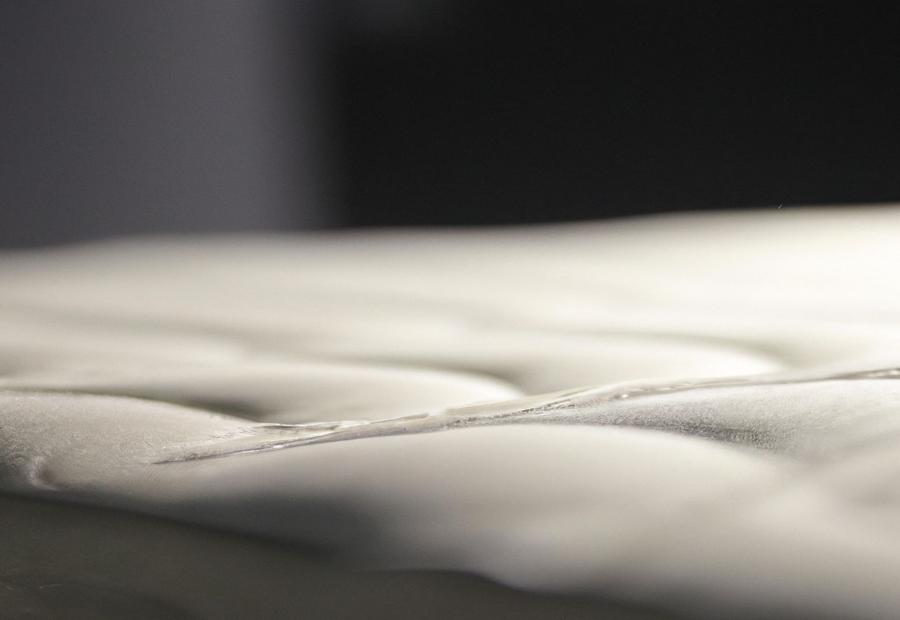
Photo Credits: Www.Mattressreviewguru.Com by Ralph Scott
Memory foam mattresses are all the rage, but have you ever wondered about their structure? In this section, we’ll uncover the secrets behind memory foam mattresses. We’ll explore the comfort layer, the transition layer, and the core of these mattresses. Get ready to dive into the intricacies of memory foam design and discover what makes them so comfortable and supportive for a good night’s sleep.
Comfort layer
The comfort layer of a memory foam mattress is key. It offers a plush, comfortable feel for sleepers. It also:
- Molds to body contours for support and pressure relief.
- Evenly distributes body weight, avoiding pressure points.
- Reacts to body heat and weight, relieving specific pressure areas.
- Adds extra coziness and softness to maximize sleep experience.
- Regulates body temperature to help keep you cool.
- Minimizes noise transmission for a quiet sleeping environment.
Plus, you can find mattresses with gel-infused foam or open-cell foam for cooling and breathability. There’re different levels of firmness for the comfort layer, so you can find one that suits your personal preferences and needs. Get the most out of a memory foam mattress with its support and comfort features. No more getting stuck in the transition layer – never-ending limbo – enjoy comfort and support!
Transition layer
A transition layer is a must-have for a memory foam mattress. It’s the middle layer between the comfort and core layers, providing extra support and a smooth transition. Its main purpose is to boost comfort and support.
- It contours to the body and distributes weight for pressure relief.
- It prevents sinkage, ensuring proper spinal alignment.
- The foam is elastic and adapts to the body while still providing resistance.
- It helps reduce motion transfer, perfect for couples with different sleep patterns.
- It absorbs noise and vibrations caused by movement.
It extends the mattress life, too. It distributes weight evenly and reduces pressure on certain areas. To find a mattress with the right balance of softness and firmness, consider personal preferences, desired support, and needs. Invest in quality and reap the rewards of a restful night’s sleep.
Core
The central layer of a memory foam mattress is its core. It is made of high-density polyurethane foam which is strong and springy. This layer is usually thicker than the other layers. It helps spread out body weight, reducing the pressure on your body. It also helps your spine stay aligned. Plus, the core affects the longevity of the mattress, making it key for a peaceful night’s sleep.
Benefits of memory foam mattresses
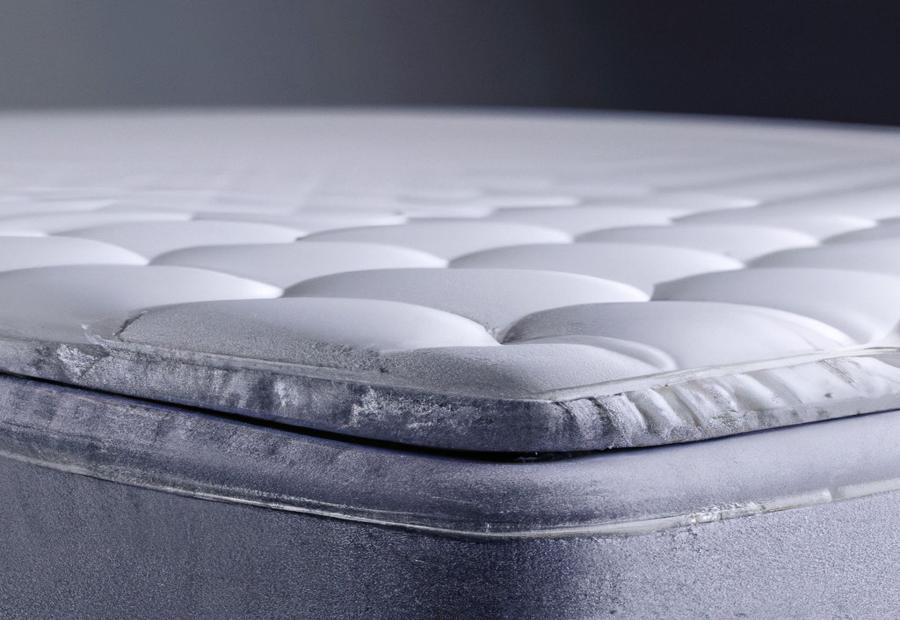
Photo Credits: Www.Mattressreviewguru.Com by Richard King
Memory foam mattresses offer a multitude of benefits that can greatly enhance your sleep experience. From pressure relief and spinal alignment to allergen resistance and motion transfer reduction, these mattresses are designed to provide unparalleled comfort and support throughout the night. Say goodbye to tossing and turning and hello to a rejuvenating sleep experience with the numerous advantages of memory foam mattresses.
Pressure relief
Memory foam is a unique material that molds to the shape of your body, alleviating pressure points. It evenly distributes weight across the mattress surface, promoting better blood circulation and targeted support. This pressure relief leads to a more comfortable and restful sleep.
Memory foam is also sensitive to changes in pressure and temperature, responding to each individual’s body heat and weight. This personalized response helps reduce pressure in sensitive areas, providing tailored comfort and support. So, if you’re looking for relief from pressure and improved sleep quality, memory foam mattresses are the way to go!
Unlock the power of your mattress with memory foam – it’s like having a chiropractor in your bed!
Spinal alignment
Memory foam mattresses are great for spinal alignment. Why? It’s made from a polymer called polyurethane, which makes it both viscous and elastic. This allows the mattress to contour to your body shape, including the natural curves of the spine. It also distributes weight evenly, reducing pressure points – particularly around sensitive areas. Plus, it recovers quickly when you move or change positions, keeping your spine aligned all night long. So, sleep with ease knowing that memory foam promotes a restful and comfortable slumber. And, it’s resistant to allergens too!
Allergen resistance
Memory foam mattresses are renowned for their allergen resistance, making them perfect for those with allergies or asthma.
- Memory foam is constructed with the hypoallergenic polymer polyurethane.
- It also helps in preventing allergens from accumulating in the mattress, due to its density and structure.
- Traditional memory foam has a tight cell structure that stops dust mites from entering the mattress, thus diminishing exposure to allergens.
- Memory foam mattresses have a closed-cell structure, which renders them less prone to bacterial growth when compared to other mattress types.
Memory foam mattresses offer extra advantages to those with allergies or asthma. Their allergen resistance leads to a cleaner sleeping environment, decreasing the risk of respiratory issues or allergic reactions during sleep.
Research has shown that memory foam mattresses have a natural ability to resist allergens and offer a hypoallergenic sleeping surface (source: Sleep Foundation). So, wave goodbye to those nights when your partner shakes the bed while trying to sleep!
Motion transfer reduction
Memory foam has motion isolating properties. It’s made of a polymer called polyurethane, which is elastic and viscous. This allows the mattress to conform to the body and evenly distribute weight – reducing pressure points and motion transfer. When pressure is applied, it contours to the shape of the body. This absorbs any sudden movements and stops them from transferring. Plus, its slow recovery period helps dampen motion as it returns to its original shape after being compressed.
Memory foam mattresses have other benefits too. These include: pressure relief, spinal alignment, allergen resistance, noise reduction, and heat retention. They come in different types, like traditional, open-cell, or gel memory foam. The structure usually has a comfort layer, a transition layer, and a core.
However, there are some drawbacks to memory foam. It tends to retain heat, it’s expensive, not waterproof, has off-gassing odors, and can be heavy.
When choosing a mattress, consider personal preferences and needs. Hot sleeper tendencies, mattress longevity, and support preferences should all be taken into account. By understanding the pros and cons of memory foam, individuals can decide if it’s suitable for their sleep needs.
Noise reduction
Memory foam mattresses have the ability to absorb vibrations, which reduces noise transmission. This means that moving around on the mattress causes less noise. It also has motion isolation properties, so when either you or your partner moves, the noise is minimized. The dense structure of memory foam helps buffer external sounds, such as footsteps and cars. And, traditional spring mattresses have creaking or squeaking noises when you move, but memory foam mattresses don’t have these noises when you adjust.
Moreover, memory foam mattresses also provide pressure relief and spinal alignment. This contributes to improved sleep and an undisturbed night’s sleep for those who value quietness. Nonetheless, memory foam mattresses are not the best choice for those who want a marshmallow-like mattress.
Drawbacks of memory foam mattresses
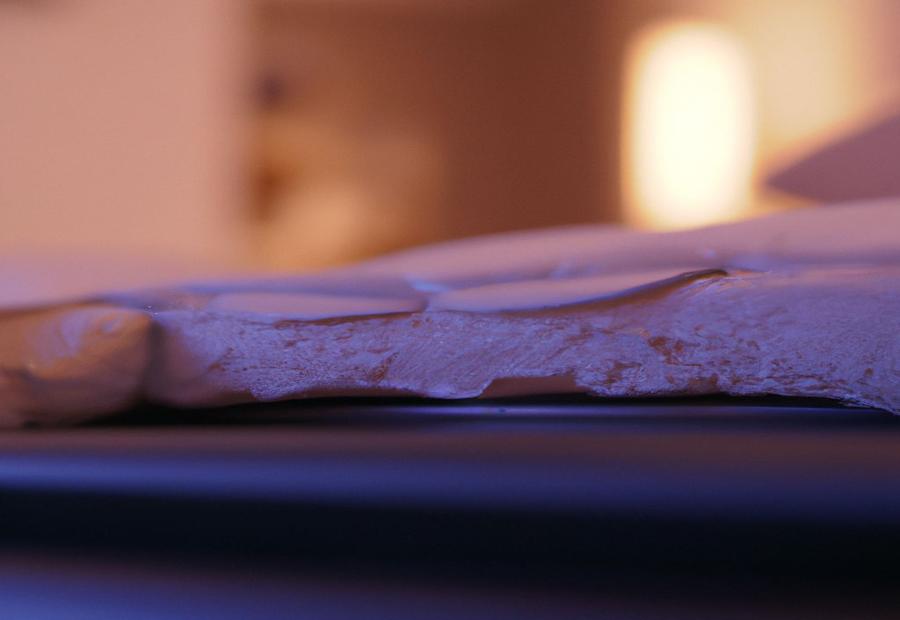
Photo Credits: Www.Mattressreviewguru.Com by Jeremy Baker
Memory foam mattresses have gained significant popularity in recent years, but it’s important to consider their drawbacks. In this section, we’ll uncover the potential downsides of memory foam mattresses. From heat retention to expense, lack of waterproofing to the uncomfortable “stuck” feeling, off-gassing odors to the weight and difficulty in moving, we’ll explore these concerns, providing you with a comprehensive understanding of the potential drawbacks associated with memory foam mattresses.
Heat retention
Heat retention is an issue with memory foam mattresses. The closed-cell structure of the polyurethane polymer restricts airflow and hinders heat dissipation. Traditional memory foam mattresses usually have more pronounced heat retention. Even with advances in technology like gel-infused or open-cell memory foams, heat retention can still occur for some individuals.
When picking a mattress, it’s important to think about personal preferences and needs – especially if heat retention is a concern. Memory foam mattresses provide many advantages such as pressure relief, spinal alignment, allergen resistance, motion transfer reduction, and noise reduction. But there are downsides too – expense, lack of waterproofing, a “stuck” feeling, off-gassing odors, weight, and difficulty in moving.
Considering all factors, including heat retention, will help people decide if a memory foam mattress is right for them.
Expense
To truly comprehend the cost of buying a memory foam mattress, let’s check out the different factors that make up the price. These include the brand name and quality of materials used during manufacturing. Plus, the size of the mattress will also affect the cost, with bigger sizes usually being more expensive.
Apart from the cost of a memory foam mattress, it is wise to assess its long-term perks and probable savings. Unlike traditional mattresses which may need replacing every few years, memory foam mattresses are known for their durability. This implies that even though they have higher upfront costs, these mattresses can save money in the long run.
It’s worth noting that while expense may be a factor for some people, it should not be the only aspect when choosing a mattress. Other criteria such as comfort, support, and personal preferences should also be taken into account.
Memory foam mattresses may offer comfort and support, but don’t anticipate them to keep you dry during a water balloon battle.
Lack of waterproofing
Memory foam mattresses provide comfort and support. But, unfortunately, they are not waterproof. This means that liquids can penetrate the mattress and damage it. To prevent this, use a mattress protector or waterproof cover. This will protect the mattress from any potential stains or mold growth.
“Stuck” feeling
Memory foam mattresses can lead to a sensation of being “stuck” in the bed. This feeling results from the unique properties of memory foam. It is designed to contour and conform to shape. The material is known for its slow response and absorption of energy. This causes a sinking feeling when trying to move.
The “stuck” feeling is due to the pressure-sensitive response of memory foam. Weight makes the foam compress and mold around the body. This creates a supportive and comfy surface. But, it can also make it harder to move. The slower response time causes it to take longer to bounce back after pressure is released. This leads to feeling trapped or unable to easily shift positions.
Some people may enjoy the enveloping feel of memory foam. Others may find it restrictive or uncomfortable. Potential buyers must consider their preferences and needs. Body weight and mobility should also be taken into account. Heavier individuals or those with difficulty moving may experience a more pronounced “stuck” feeling.
In conclusion, the “stuck” feeling associated with memory foam mattresses comes from the pressure-sensitive response and slow recovery time. Personal preferences and needs should be considered when deciding if memory foam is suitable for an individual’s sleep experience. Plus, off-gassing odors are eliminated, leaving your bedroom smelling fresh.
Off-gassing odors
Memory foam mattresses are renowned for comfort and support. But, they may come with off-gassing odors. Off-gassing is the release of VOCs from the foam material. It has a strong, chemical smell.
The polymer in memory foam, polyurethane, traps gases during production. When the mattress is unpacked, these gases are released. To reduce odors, manufacturers use foams certified by CertiPUR-US . Some mattresses use natural materials like green tea or charcoal.
The off-gassing odor diminishes over time. Factors like mattress quality, ventilation, and individual sensitivity affect how to flatten memory foam mattress topper.
When it comes to moving memory foam mattresses, it’s like wrestling a sumo wrestler.
Weight and difficulty in moving
Memory foam mattresses possess a dense composition, making them heavier than other types of mattresses. This heftiness can make them hard to lift or maneuver, particularly for people with limited strength or mobility. Consequently, difficulties can arise when trying to move them within a room or up/down stairs and can limit their portability during moves or furniture rearrangements. Moreover, frequently moving a heavy memory foam mattress can add to wear and tear on the mattress, shortening its lifespan and diminishing its performance.
Despite their weight, memory foam mattresses remain a popular comfort option. According to SleepFoundation.org, they can be challenging to move without assistance. Moreover, sleeping on a memory foam mattress is like being embraced by a supportive cloud – unless you’re a hot sleeper, in which case it’s like being confined in a warm hug!
Suitability of memory foam mattresses
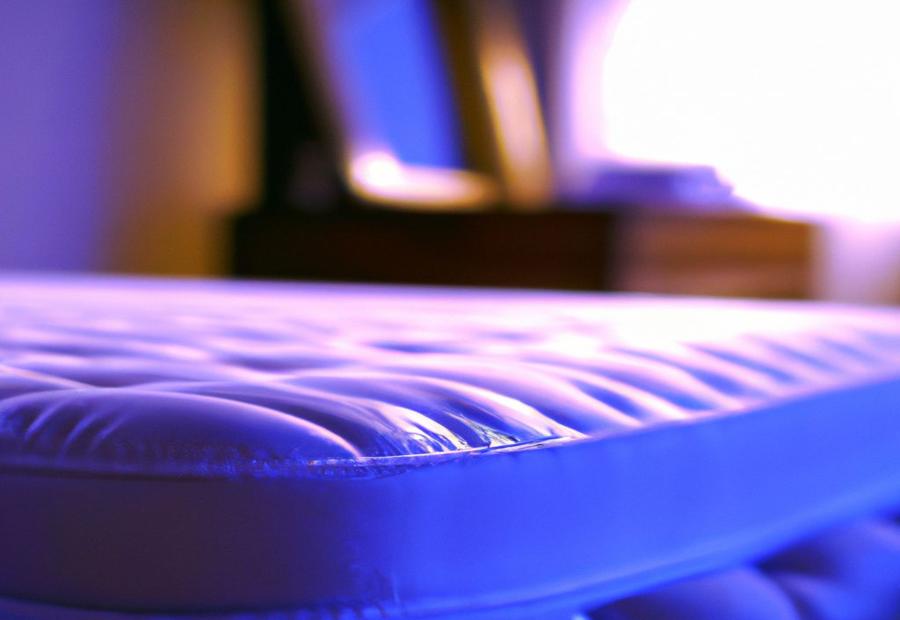
Photo Credits: Www.Mattressreviewguru.Com by Willie Hill
When it comes to memory foam mattresses, finding the one that suits your specific needs and preferences is key. In this section, we will explore various factors to consider when determining the suitability of memory foam mattresses. From personal preferences and needs to considerations for hot sleepers, we will delve into the longevity and support preferences that play a crucial role in choosing the perfect memory foam mattress for a restful night’s sleep.
Personal preferences and needs
The Reference Data tells us that personal preferences and needs are essential for gauging whether a memory foam mattress is suitable. Preferences like cushioning or firmness can be catered to by memory foam’s ability to adjust to the body. Needs like back pain, allergies, and sleep habits should all be taken into account when choosing a mattress. It’s important to select one with temperature regulation and motion transfer reduction to get the best sleep.
In conclusion, these personal factors make a huge impact on whether memory foam is right for you. But beware, hot sleepers! If you don’t pick the right one, you may find yourself awake and feeling like a grilled cheese sandwich in the morning.
Considerations for hot sleepers
Hot sleepers must consider specific factors when shopping for a memory foam mattress. Traditional foam may retain more heat than open-cell or gel memory foam. Look for features like cooling tech, breathable fabrics, and airflow-enhancing structures.
A medium or medium-firm level of firmness is often best. These provide better support and promote airflow around the body.
Additionally, hot sleepers might benefit from cooling bedding accessories. For example, moisture-wicking sheets or memory foam mattress toppers designed to dissipate heat.
When selecting a memory foam mattress, hot sleepers must find a balance between comfort and temperature regulation. This will help to create a cool sleeping environment for restful sleep all night long.
Sadly, even though memory foam mattresses have a long lifespan, they can’t remember the good times we had together.
Longevity
Memory foam mattresses have a rep for being durable and long-lasting. This is due to their construction and material. Polyurethane, which is highly resilient, is used to make them. This material allows the mattress to keep its shape and support with regular use.
The viscoelastic quality of memory foam allows it to mould to the body’s shape. This distributes weight evenly across the mattress, reducing pressure points. It also takes a long time to return to its original shape after being compressed. This helps keep the mattress in good condition for a long time.
Proper care and maintenance can prolong the life of a memory foam mattress. Rotating it, using a mattress protector and cleaning spills ASAP can help stop damage. The expected durability of one may vary depending on usage frequency, body weight and overall mattress quality. Manufacturers or customer reviews can provide more info on a particular mattress.
Fun fact – memory foam mattresses were originally created by NASA in the 1960s! It was part of a project to improve cushioning for astronauts during space travel.
Support preference
Choosing a memory foam mattress that suits your support preference? Firmness options range from soft to very firm – pick one that best suits you! Memory foam molds to your body, evenly distributing weight and relieving pressure points for proper spinal alignment.
Mattresses come with supportive layers, such as the comfort layer, transition layer, and core, that contribute to the overall supportiveness. Some mattresses also have reinforced edges or additional support systems to prevent sinking or sagging near the edge of the bed.
Memory foam mattresses can be used with adjustable bed bases, so you can customize the level of support and elevation for different sleeping positions. Make an informed decision based on your support preferences!
Conclusion
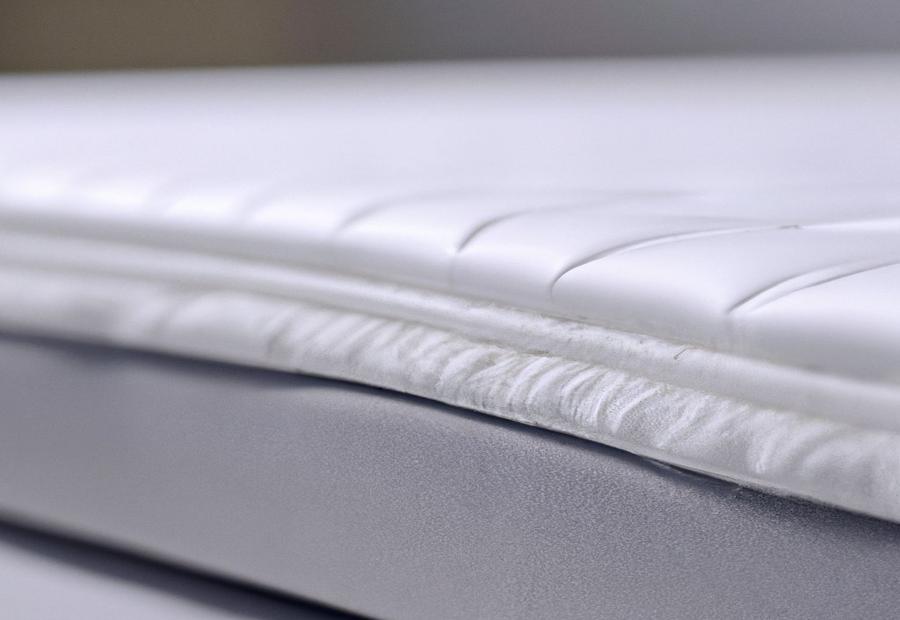
Photo Credits: Www.Mattressreviewguru.Com by Andrew Walker
Memory foam mattresses are a hit! They fit your body shape, giving you comfort and support. The foam material responds to your body heat and pressure. People love it for its ability to relieve pressure points and promote better sleep. Plus, it’s durable and long-lasting. So, investing in a memory foam mattress is a wise decision. It’s great for people with back and joint pain. It provides the necessary cushioning to ease discomfort. All in all, memory foam mattresses provide an ideal sleep surface. That’s why they’re so popular among shoppers.
Some Facts About What is Memory Foam Mattress:
- ✅ Memory foam mattresses were first designed in the 1960s for use in NASA spaceship seats. (Source: Sleep Foundation)
- ✅ Memory foam is made of a polymer called polyurethane and is known for its viscosity and elasticity. (Source: Sleep Foundation)
- ✅ There are three main types of memory foam: traditional, open-cell, and gel. (Source: Sleep Foundation)
- ✅ Memory foam mattresses provide pressure relief, promote spinal alignment, and reduce motion transfer. (Source: Sleep Foundation)
- ✅ Memory foam mattresses can retain heat, have off-gassing odors, and be heavy and difficult to move. (Source: Furniture Fair)
FAQs about What Is Memory Foam Mattress
What is a memory foam mattress?
A memory foam mattress is a type of mattress that is made of a polymer called polyurethane. It was first designed in the 1960s for use in NASA spaceship seats and has since become popular in the bedding industry. Memory foam mattresses are known for their viscosity and elasticity, and they slowly mold to the body in response to pressure.
What are the benefits of a memory foam mattress?
A memory foam mattress offers several benefits. It provides pressure relief and promotes spinal alignment, which can help reduce pain and improve sleep quality for those with back or joint issues. Memory foam mattresses also absorb motion, making them ideal for couples or those who share a bed. They resist allergens, reduce motion transfer, and are quiet.
Are there any drawbacks to memory foam mattresses?
While memory foam mattresses have numerous benefits, they also have some drawbacks. They can retain heat, which may not be suitable for hot sleepers. When new, memory foam mattresses can have a chemical odor, although this usually dissipates over time. They may be more expensive compared to other mattress types and can be difficult to move due to their weight.
How do memory foam mattresses compare to other types of mattresses?
Memory foam mattresses differ from other types of mattresses in terms of material and properties. They conform to the body’s shape, providing support and pressure relief. Unlike traditional spring mattresses, memory foam mattresses absorb motion, reducing disturbances from a sleeping partner. However, memory foam mattresses may be too soft for some individuals or lack the support they need.
How should I choose a memory foam mattress?
Choosing a memory foam mattress requires careful research and consideration of personal preferences and needs. Factors to consider include the level of firmness, the thickness of the memory foam layer, and the overall construction of the mattress. Tools like the bedMATCH rest test system offered by Furniture Fair can help individuals find the perfect mattress match for their specific requirements.
How long do memory foam mattresses typically last?
The lifespan of a memory foam mattress can vary depending on various factors such as quality, usage, and care. Some memory foam mattresses can last longer than others. It is essential to follow proper maintenance and care instructions provided by the manufacturer to maximize the lifespan of the mattress.

